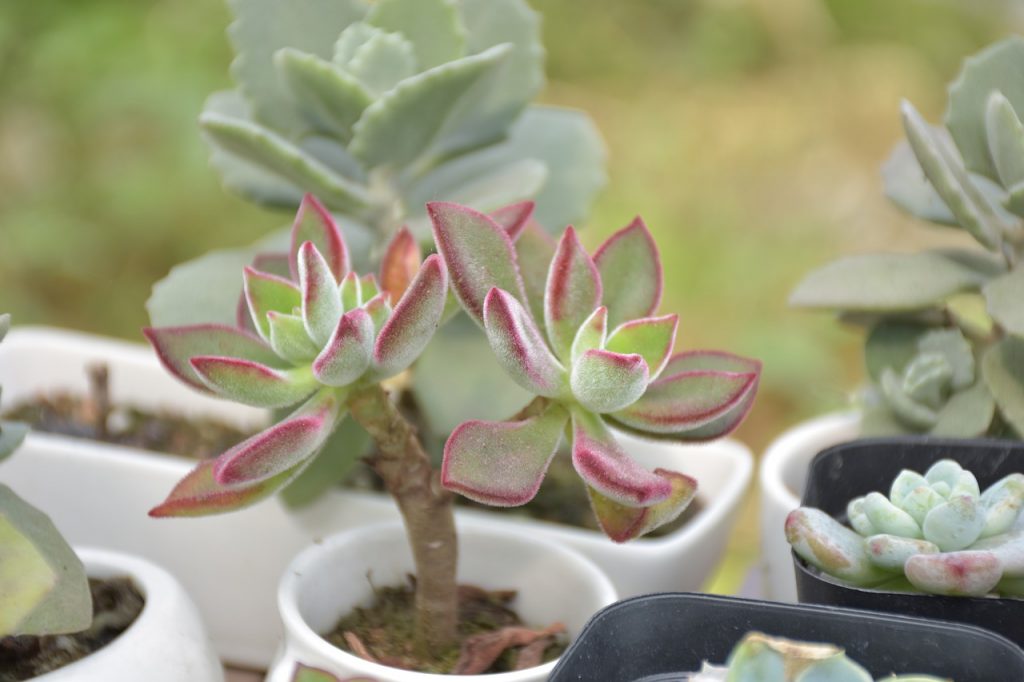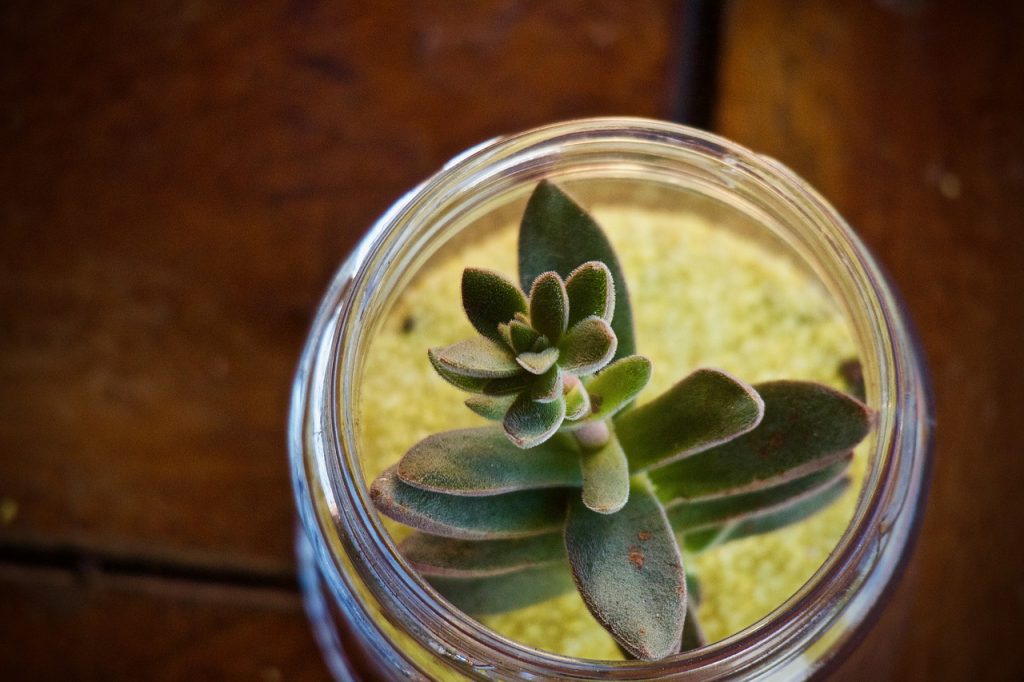To start with this may sound as an inappropriate question. Succulents don’t like too much water after all, and over-watering causes rotting in these plants. Oddly enough, in some instances, succulents survive in extreme conditions, such as when they are completely soaked in water.
So will they root in water? The quick answer is yes, but not all varieties. To succulents that can survive rooting in water belong the Sempervivum or Echerveria. Other varieties may not survive in such an environment. Let’s dive a bit deeper into the topic, explaining how succulents root in water and what you need to know.
Table of Contents
Offshoots are your best bet for water propagation
The successful process of propagation starts with choosing the right part of the succulent to propagate. Cuttings, at least in this case, are harder to propagate in water. I recommend you to use an offshoot. The success rate is much better in this case.
Although I used cuttings in my previous water propagation experiments, I don’t recommend it for beginners. I am not saying that propagation with cuttings cannot work. It does work when handled correctly. But if you are a starter, it is safer to use offshoots. Now let me tell you how to do it all.

Guide on succulent water propagation
Let me clarify a few things first. Water propagation, as you likely guess, is the process of propagating succulents in water. This process is a little surprising to most succulent lovers. For long, most of us believed that succulents would die when left in water. Believe it or not though, water propagation can be as effective as the traditional technique.
In fact, more and more people are using this technique to propagate succulents. But if you are a complete beginner, count with some trial and error experiments before achieving real success. For disclaimer, if the process is not carried out properly, succulents may drown in the water.
It is important to remember that succulents do have plenty of water in their stems and leaves. So if you soak them in water, there is a very high chance that they start to rot. Keep it on your mind when proceeding further.
What makes succulents survive in water?
The belief that water causes rotting in succulent stems from the idea that succulents planted in wet soil would rot. But the reality is that water alone does not cause rotting. What causes root rotting are the pathogens that live in wet soil.
If soaked in water, succulents do not necessarily rot or die as long they are not exposed to elements that cause rotting.
Traditional propagation vs water propagation
One of the things that bothered me before was the thought that roots developed using water propagation were not the roots that the plants needed when we plant it to the soil later on. But a new bout of curiosity sprouted when I heard that some succulent growers have achieved some success using the water propagation method.
As a result, I was so eager to start an experiment clarifying whether or not what they said was true. So the experiment commenced. I tried three cuttings which I soaked in water. The cuttings were from the Sempervivum. Luckily, I later found out that I have chosen the right variety of succulents. As mentioned earlier, Sempervivum survives in water.
Jar with clean water and a bit of plastic is all you need
After preparing the cuttings, I let them dry. It took several days for the cuttings to dry. I used clean jars for the whole process. The jars contained just enough water for the cuttings to soak in. Then I covered each jar with clean transparent plastic with a little hole in the middle where the cutting was inserted through.
I used plain tap water. Some growers suggest the use of distilled or purified water. I just used pure water. No fertilizer or whatsoever nutrient source included. I let the tip of the cuttings reach the water a little bit. Some growers recommend trying the water propagation without having the cuttings soak in water. Instead, the cuttings are sitting just above the water. The moist from the water triggers the growth of the roots.
Back to my experiment though. I places the cuttings to the area with indirect sunlight and monitored them on a daily basis. What I learned was that the roots took some weeks to grow. In fact, the roots started to grow after 5 weeks. I expected it to take much shorter but here we are. In the entire process, I was suspecting that the cuttings would just rot because of the time they sat in the water. I even thought I did it wrong. Thankfully, after several weeks of waiting, the roots were finally grown.
Planting into the soil–the big day
Then I took the cuttings from the jars and let them dry for a day. Although the roots were fully grown, I wasn’t quite sure whether the cuttings would survive in the soil. This is because they came from water only. I already had prepared the succulent soil mix in the pot where the cuttings would be planted.
Then, finally, I planted the cuttings. Planting the cuttings propagated in the water was just like planting the regular cutting traditionally propagated. The newly planted cuttings were placed in the area with sunlight again. I kept monitoring them though, avoiding strong sunlight in the afternoons.
The full-grown succulents can survive 4-6 hours under direct sun. But of course, the baby succulents will not survive in such conditions. I increased the exposure to sun as the cuttings grew bigger. At this point, the plants need care and attention. They are not hardy enough to stand against extreme environmental conditions. As the cuttings grow stronger roots, they become more versatile. One way to check this is to simply check the roots. You can do it by partially pulling the cutting from the soil. Cuttings that don’t let go of the soil indicate that their roots are established and you do not need to worry much anymore…

Is water propagation better than traditional methods?
Although water propagation is indeed a legit way to propagate succulents, I don’t see it as better than the traditional and vice versa. It is just a matter of personal preference. As a succulent grower, it is up to you what route you would like to take.
The drawback of water propagation is that it takes much longer for the plants to propagate. On the flip side, it is in a way easier when it comes to materials you need–since you really need just a jar and a clean tap water… Remember though that water propagation won’t work with all succulent varieties. Some plants just won’t survive in water…
Final thoughts
Water alone does not really cause root rotting in succulents, as I originally though. What kills the plants are the pathogens that reside in the wet soil. No soil no pathogens though. Hence water propagation is possible, and succulents will root in water.
If you want to try water propagation, just remember what you learned in this post–how you should do it right. And always make sure that you choose the right variety of succulents to propagate in water. to sum it up, if you are not really sure what you’re doing, it is better staying with traditional succulent propagation methods, since the success rate is much higher in this case… For more information about succulent growing, read my post: How to Grow Succulents? The Complete Guide.
